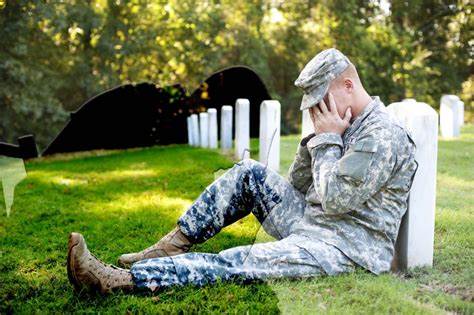Post-Traumatic Stress Disorder (PTSD) is a significant mental health concern among military veterans, given the unique challenges and experiences they face during their service. Let’s explore the prevalence of PTSD in veterans and the specific challenges associated with this population:
- Prevalence of PTSD in Veterans:
- High Incidence Rates: Veterans, particularly those who have been in combat or exposed to traumatic events during their service, often face a higher risk of developing PTSD compared to the general population.
- Deployment Impact: The length and intensity of deployments, exposure to combat, and multiple deployments increase the likelihood of experiencing traumatic events, contributing to higher rates of PTSD.
- Unique Challenges for Veterans with PTSD:
- Combat Exposure: Veterans often face direct exposure to combat situations, witnessing violence, death, and experiencing life-threatening situations. These intense and prolonged experiences can significantly impact their mental health.
- Multiple Deployments: Service members who undergo multiple deployments may face cumulative stressors, increasing the risk of developing PTSD. Repeated exposure to traumatic events can exacerbate the severity of symptoms.
- Transition to Civilian Life: Returning to civilian life can be challenging for veterans. The shift from a highly structured and mission-oriented environment to civilian life can contribute to feelings of isolation, purposelessness, and difficulty adjusting.
- Stigma and Barriers to Treatment: Despite increased awareness, stigma surrounding mental health issues remains a significant barrier to seeking help for veterans. Fear of judgment, concerns about career repercussions, and a sense of self-reliance can hinder veterans from seeking timely mental health support.
- Survivor’s Guilt: Veterans may grapple with survivor’s guilt, especially if they have lost comrades during their service. Feelings of responsibility for the well-being of others and guilt for surviving can contribute to the development or exacerbation of PTSD.
- Physical Injuries and Co-occurring Conditions: Veterans often face physical injuries in addition to psychological trauma. Co-occurring conditions, such as traumatic brain injuries (TBI), chronic pain, or substance abuse, can complicate the clinical picture and treatment of PTSD.
- Difficulty Expressing Emotions: Military culture often emphasizes stoicism and resilience. Veterans may find it challenging to express or discuss their emotional struggles, making it crucial for mental health professionals to create a safe and understanding space for communication.
- Impact on Relationships: PTSD can strain relationships with family and friends. Symptoms such as hypervigilance, emotional numbing, and difficulty forming emotional connections may lead to challenges in maintaining healthy relationships.
- Treatment and Support for Veterans with PTSD:
- Veterans Affairs (VA) Services: The U.S. Department of Veterans Affairs offers a range of services for veterans with PTSD, including counseling, therapy, and support groups.
- Military-Specific Programs: Specialized programs and interventions tailored to the military context, such as resilience training and peer support programs, aim to address the unique needs of veterans.
- Comprehensive Care: Treatment often involves a comprehensive approach, addressing both the psychological and physical aspects of the veteran’s well-being. This may include a combination of therapy, medication, and rehabilitation services.
- Community and Family Involvement:
- Family Support: Involving families in the treatment process is crucial. Educating family members about PTSD and its impact can foster understanding, empathy, and a supportive environment for the veteran’s recovery.
- Community Outreach: Community organizations and mental health advocates play a vital role in raising awareness, reducing stigma, and providing additional resources and support for veterans.
In summary, PTSD in veterans is a complex and multifaceted issue. Acknowledging the unique challenges faced by military personnel and veterans, and implementing tailored interventions and support systems, is essential to address the prevalence and impact of PTSD in this population. Promoting a culture of mental health awareness, reducing stigma, and ensuring accessible and effective mental health services are key components of a comprehensive approach to supporting veterans with PTSD.

